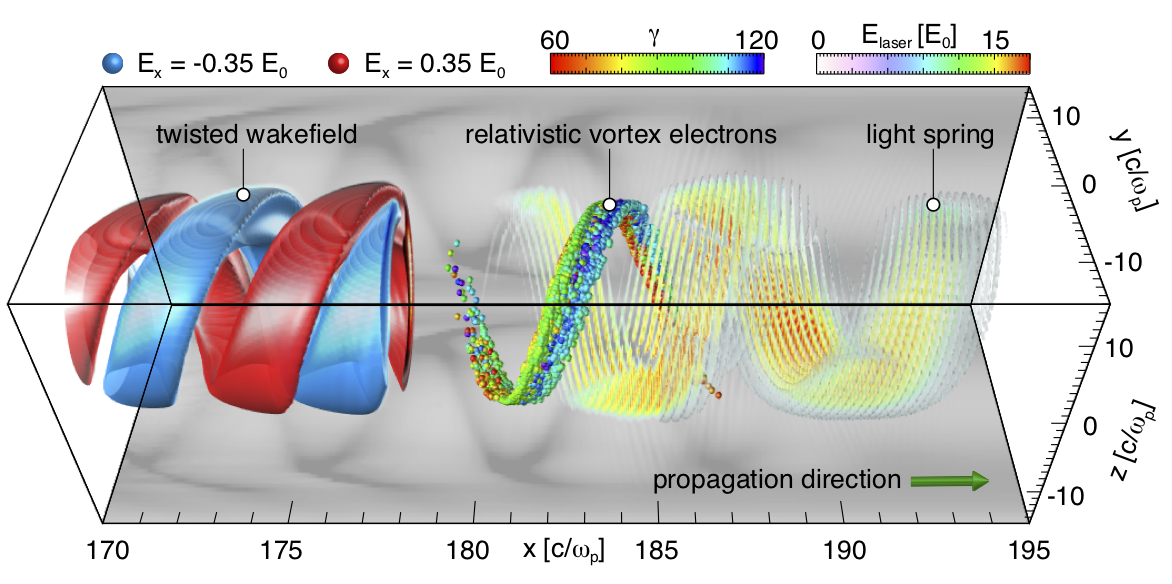All optical control of the topology of plasma accelerators

The ability to shape the topology of plasma waves is a remarkable feature, which remains largely unexplored, and that may have deep ramifications into basic plasma physics and relativistic nonlinear optics. This feature is particularly interesting in the context of particle acceleration as it allows to shape the structure of the plasma in unique and novel ways, which are currently inaccessible to more conventional approaches.
Controlling the topology requires structured light, lasers with sophisticated internal degrees of freedom like the orbital angular momentum, in which the phase front of the laser is twisted. Although challenging, there are no doubts that ultra-intense structured lasers will be possible thanks to the recent advances in ultra-fast spatiotemporal beam shaping.Plasma waves with orbital angular momentum lead to intriguing and surprising features, that are intrinsically connected to its phase properties. They will give pathways to produce new types of particle beams, that could be already useful to the multiple communities that probe matter using structured particle beams. Our work shows that these plasma waves can produce classical electron vortex bunches, that are relativistic, and that have intriguing quantities. Although of a purely classical nature, they reproduce the orbital angular momentum quantisation features of twisted photon beams and twisted structured quantum wave-packets.References
J. Vieira, Particle acceleration and exotic light emission in structured plasma wakefields, 59th Annual Meeting of the APS Division of Plasma Physics 12, 62 (2017), more info here.








